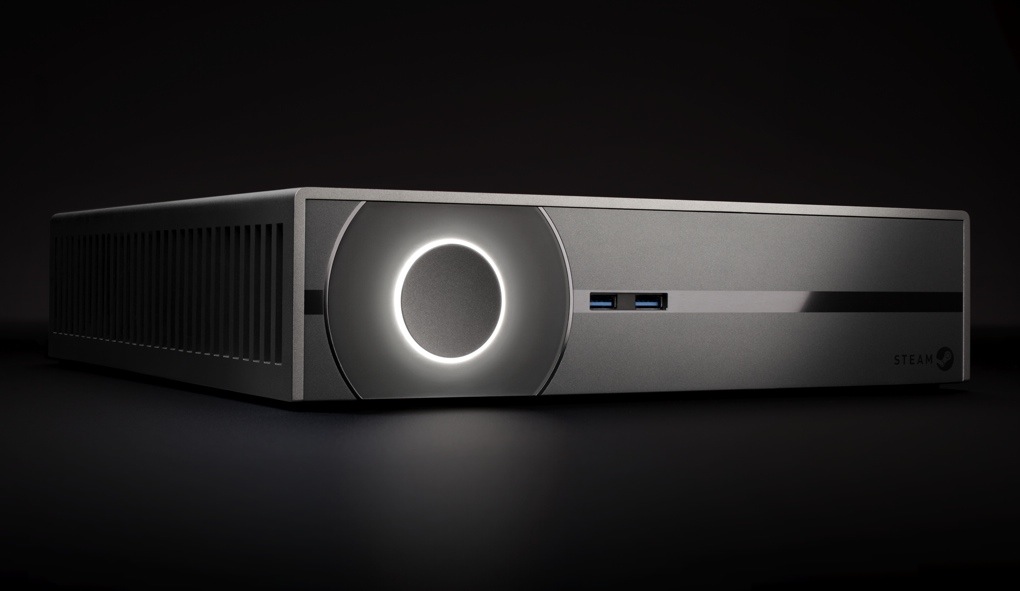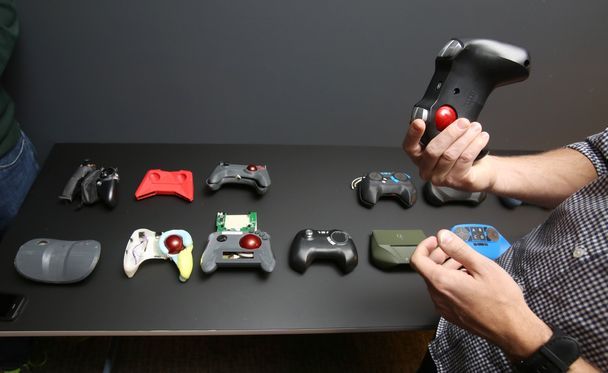
http://www.theverge.com/2013/11/4/5...chine-valves-video-game-console-of-the-future
the articles kinda long, so I'll just drop some select quotes
Valve will ship 300 prototype Steam Machines to beta testers this year, and there's nothing particularly special about their specs. That’s kind of the point, though: the first Steam Machine is a computer that can fit bog standard parts just like a full-size gaming rig, and yet fit into your entertainment center. Valve's steel and aluminum chassis measures just over 12 inches on a side and is 2.9 inches tall, making it a little bigger than an Xbox 360 and smaller than any gaming PC of its ilk. And yet the box manages to fit a giant Nvidia GeForce GTX Titan graphics card and a full desktop CPU — and keep those parts quiet and cool — without cramming them in like a jigsaw puzzle.
The secret is actually quite simple, it turns out: Valve designed the case so the parts can breathe individually. The CPU blows air out the top, the power supply out the side, and the graphics card exhaust out back, and none share any airspace within the case.
That might sound like common sense, but it’s remarkably hard to find a case that does so while still making it easy to drop components in. Here, the key component responsible for dividing those three zones is a simple plastic shroud which unscrews in a jiffy. The box we touched was already surprisingly cool and quiet, but Valve's still tweaking the design: we saw Valve printing a couple of the shrouds as we walked through its rapid prototyping lab.

I tried Portal 2, Trine 2, and Metro: Last Light using the controller, and I must admit the controls weren't immediately intuitive. Pressing buttons on the back of the controller to jump, for instance, felt pretty unnatural after spending decades using my thumbs. It was also rather disorienting to have my character move as soon as I moved my left thumb the slightest amount, since I've become accustomed to resting them on an analog stick or the WASD keys of a keyboard. It also felt pretty weird to have my thumbs pulsate with haptic feedback as they moved around.
(hopefully they got the Linux version of Metro: Last Light up and running. I know they've been working on it, and one thing Linux and the Steam Machine needs for testing is a high-spec game)
But it wasn't that the controls didn't work well, they were simply unfamiliar. The touchpads are surprisingly accurate, and they make first-person shooters and other mouse-friendly games far more accessible than any analog stick can afford. You can sweep your thumb across the pad to turn on your heel, then move it a tiny bit more to line up a headshot without having to compensate for a joystick's return motion. You can push a thumb to the very edge of the pad to keep moving continuously. You can even use both touchpads simultaneously in cursor-driven games to move the mouse cursor faster than with either alone.
And importantly, you won't have to settle for default generic controls or painstakingly figure out which keys should bind to which buttons by yourself. Valve is crowdsourcing controller profiles for every Steam game, allowing players to vote up the best sets of controls, and it's simple to tweak them afterwards as well. When I found that the left trackpad was too sensitive in Portal 2, I simply turned it down.
As far as performance is concerned, Valve's Steam Machine with SteamOS certainly seemed up to snuff, at least with these high-end components. The team switched between a Windows and SteamOS box halfway through our demo, and I couldn't tell the difference.
After a short demo, I got an opportunity to ask my burning questions about where all of this is going.
First, circle January on your calendar. That's when the other shoe will drop; Valve's hardware and software partners will reveal the actual Steam Machines that will ship to consumers, and the games that will come to the Linux platform, at the 2014 Consumer Electronics Show.
There will be a number of different Steam Machine boxes on sale in 2014, and Valve expects them to arrive mid-year. Some of those boxes will be far smaller and / or cheaper than Valve's own prototype unit. "You can get far smaller, and that's what many OEMs are doing… I think it's safe to say less than a quarter of the size," the team told me.
Of course, when they get to that size, they won’t be using full-size graphics cards any more. Intel's integrated graphics are a possibility there: "We're super interested in Iris Pro." When I ask whether Intel or AMD might make special chips to bring down the price of truly powerful integrated graphics, the room goes quiet for a moment. "We don’t have an answer that we can give you before January," the team answers.
The Steam Controller has a gyroscope, it turns out, one which Valve plans to enable in a software update to add motion control. The company will be shipping an API for games that uses the controller's touchpads and touchscreen natively when it rolls out the prototype units, and all of Valve's own game development teams are already integrating support into their games.
Last but not least, SteamOS won't just be about games: the company plans to add other services for video and music playback. "However, we are not planning support for spreadsheets," quips Lombardi.
Wrap-up
We left Valve's headquarters with the biggest, most important questions unanswered — questions that will determine whether the Steam Machine could legitimately challenge game consoles from Sony and Microsoft. Valve wouldn't tell me who the company's hardware and software partners are, what Steam Machines or the Steam Controller will cost, or which killer games might make the Linux-based SteamOS an attractive Windows alternative.
But over the course of my visit, Valve made it clear that's not the point quite yet. The team is focused on serving its existing PC customers above all else, and doing it in a relaxed fashion. "We've been speaking as if it's a foregone conclusion that everyone wants to be in the living room. That's not true, and it's great that that's not true," says Coomer. "There's a little bit of consternation around our most dedicated customers that we might try to shuttle them into a different room in the house. That's not what we're trying to do at all."
Speaking as one of those dedicated customers, I can say that what Valve has built is fairly intriguing even right now: one of the most attractive and customizable miniature computer cases ever built, and a controller with the precision — if not the feel — of a mouse. Valve admits that it has "a lot to accomplish over the next year or two" to prove that its efforts have been worthwhile, but I'm already excited for the Steam Controller. I can hardly wait till January to see what Valve’s partners have been cooking


 touting gaming rigs, it'll be upgradeable and resolution-toggleable shyt and all that jazz? If so and it's affordable...hmm....
touting gaming rigs, it'll be upgradeable and resolution-toggleable shyt and all that jazz? If so and it's affordable...hmm....




